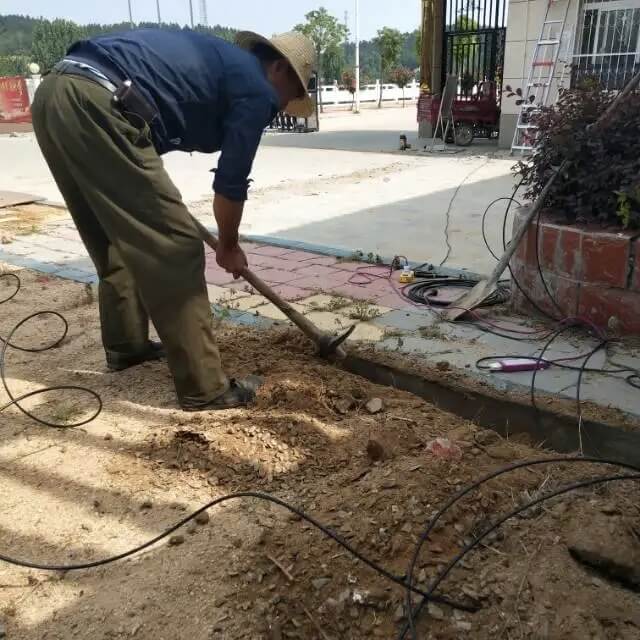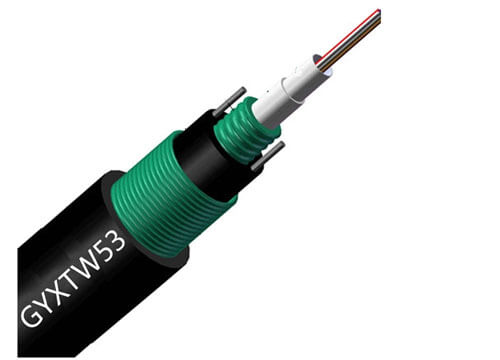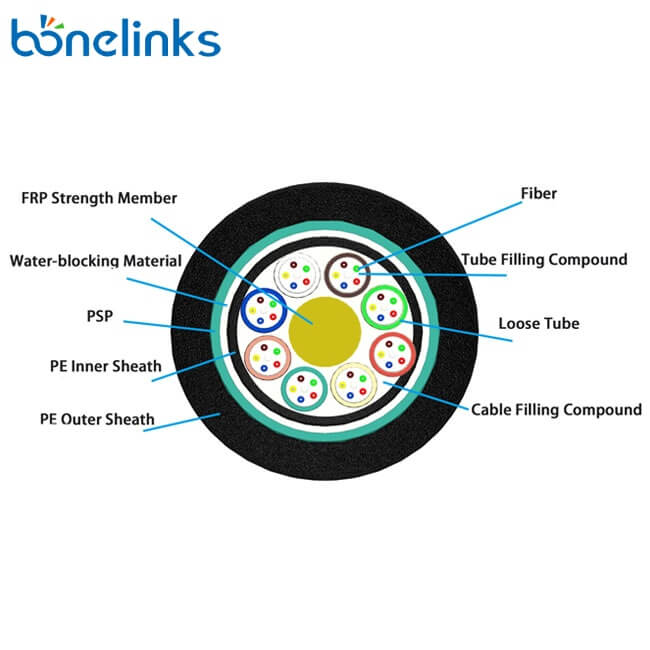Direct bury fiber optic cable is designed for direct burial installation, which is buried directly in the ground without protection. Directly buried optical cables are usually protected with double sheaths and Kevlar yarns. This article can help you learn basic information about direct bury fiber optic cable quickly.
What is Direct Bury Fiber Optic Cable?
Direct bury fiber optic cable is an optical cable with steel tape or steel wire armor. It has the performance of resisting external mechanical damage and soil erosion, and can be directly buried in the ditch or buried underground with a vibrating plow. Direct burial is the most convenient way to lay optical cables, and it also saves the cost of pipeline and overhead installation. Generally speaking, the direct buried optical cable has good mechanical properties and temperature performance, compression resistance and flexibility, suitable for direct buried construction, convenient construction and installation, Aluminum Polyethylene Laminate (APL) moisture-proof layer, Plastic Steel Plastic(PSP) to enhance moisture resistance, and water-blocking materials for underground applications.
Type of Direct Bury Fiber Optic Cable
There are several types of direct bury fiber optic cable on the market. The most commonly used items are GYTA53, GYXTW53, and GYFTY53.
- GYTA53 Direct Bury Fiber Optic Cable: GYTA53 direct bury fiber optic cable is a double sheath double armor stranded loose tube outdoor optical cable. The loose tube stranding technology makes the optical fiber have good secondary excess length, and allows the optical fiber to move freely in the tube, keeping the optical fiber stress-free while the optical cable is subjected to longitudinal stress. Corrugated steel tape armor and double polyethylene (PE) jackets provide excellent crush and rodent resistance. Metal strength members provide excellent strain performance. It is suitable for direct burial and pipeline applications.
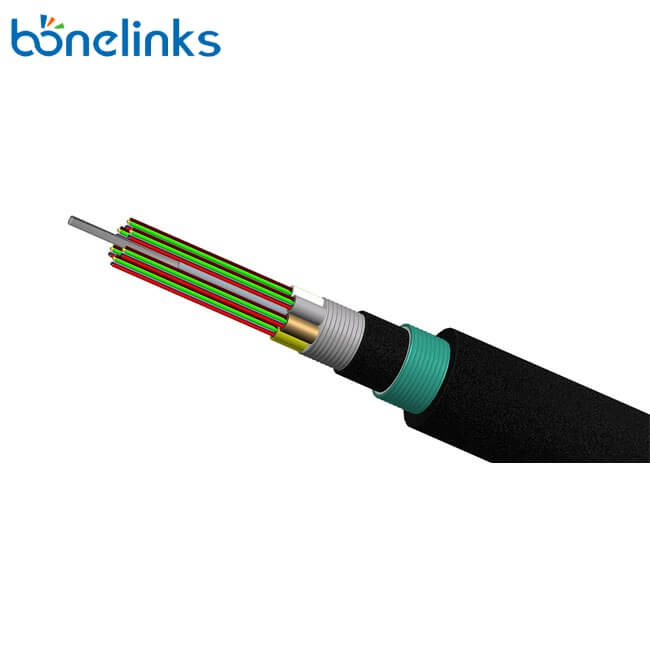
- GYXTW53 Direct Bury Fiber Optic Cable: GYXTW53 direct bury fiber optic cable is a central loose tube cable with double-layer steel belt and double-layer PE sheath. The optical cable provides a full-section water-blocking structure to ensure good waterproof and moisture-proof performance. The loose tube is filled with special ointment to protect key optical fibers. Two parallel round wires are resistant to tension and side pressure. The outer diameter is small, lightweight, and has good bending performance.

- GYFTY53 Direct Bury Fiber Optic Cable: GYFTY53 direct bury fiber optic cable is a double-sheath outdoor optical fiber cable with non-metallic reinforcement, loose tube layer stranded filling type, polyethylene inner sheath, non-metallic fiber reinforcement, and low-smoke zero-halogen outer sheath. The optical cable provides a full-section water-blocking structure to ensure good water-blocking and moisture-proof performance. The loose tube is filled with special ointment to protect the optical fiber and glass yarn to ensure that the optical cable has good tensile performance and anti-rat bite. The non-metallic reinforcement is suitable for minefields.

Application
Direct bury fiber optic cables are widely used in subways, tunnels, long-distance communications, inter-office communications networks, core networks, metropolitan area networks (MAN), local area networks (LAN), outdoor access networks, telecommunications, video, data transmission, cable TV, etc.
How to Choose Direct Bury Fiber Optic Cable?
There are also two structures of direct buried optical cables, namely ordinary direct buried optical cables and special direct buried optical cables. The metal outer sheath of ordinary direct-buried optical cables is usually a longitudinally wrapped corrugated steel strip, which is suitable for occasions where external stress is small. At this time, you can choose direct-buried optical cables similar to GYXTW53 and GYFTY53. The special direct-buried optical cable is armored with fine steel wire, which is suitable for occasions where the ground slope is greater than 30 degrees, the geology is not very stable, and the external stress is large. At this time, you can choose a direct-buried optical cable similar to GYTA53.
The performance against mechanical force of both is as follows.
- Generally, the allowable short-term tension of ordinary direct buried optical cable is 3000N, the allowable long-term side pressure is 10N/mm, and the allowable long-term side pressure of short-term side pressure is 30N/mm.
- The allowable short-term tension of the special direct buried optical cable is 20000N, the allowable long-term side pressure is 30N/mm, and the allowable long-term side pressure of the short-term side pressure is 50N/mm.
- In addition, in areas with severe rodent damage, the outer sheath of the optical cable often has anti-bite characteristics. Its outer sheath is made of high-strength nylon material.
It is a rough suggestion for reference. For specific laying environments, you can contact us and Bonelinks will give you professional advice.
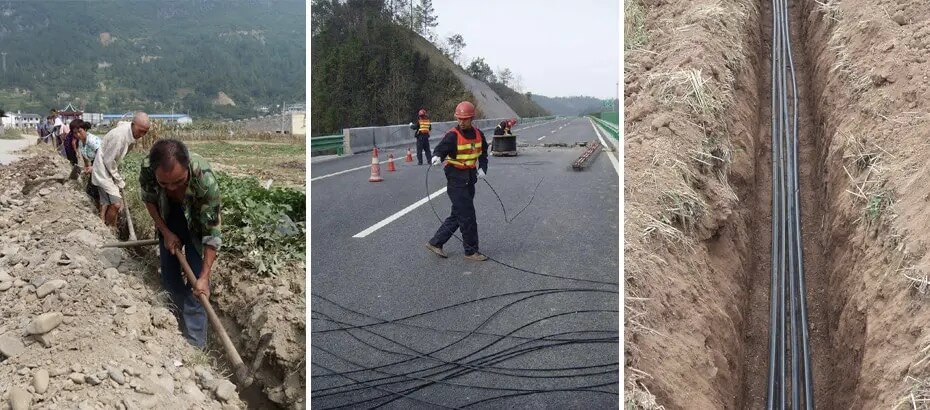
Summary
Direct bury fiber optic cables are buried directly in the ground without any additional protective cover. They may be exposed to harsh environmental conditions, such as changes in soil temperature and moisture. Direct bury fiber optic cables have the advantage of being replaced less frequently and are better able to maintain stability even in the event of natural disasters. Bonelinks provides all kinds of direct bury fiber optic cables. If you have any needs or doubts, feel free to reach us and we will give our professional suggestions.

